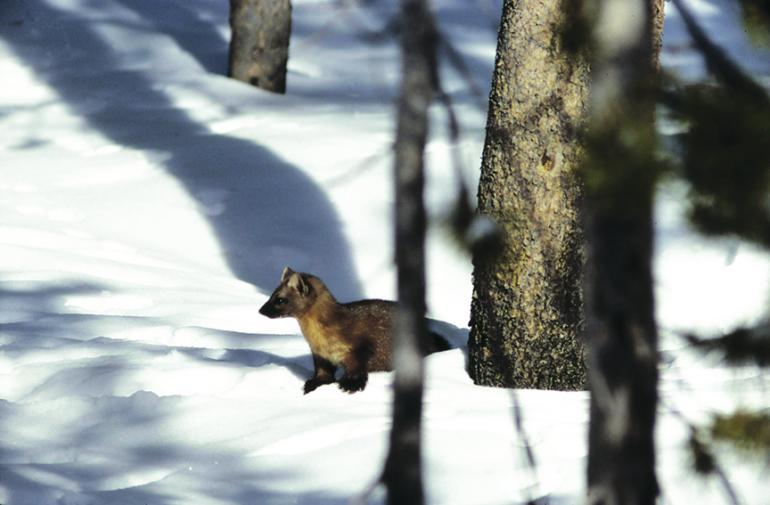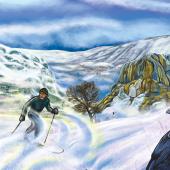Willful Weasel
Pine marten with a sweet tooth.
Pine martens are silky-haired, cat-sized members of the weasel family that are native to Montana’s mountainous terrain, but rarely seen by humans. Shy and generally solitary, martens are known for distance travel, large territories (especially the males), and what is sometimes referred to as an internal GPS—they are excellent navigators. Hairy-pawed, golden-chested, and inquisitive, martens hunt small rodents, especially voles, but are opportunistic feeders that will search out and consume a wide variety of meals, especially during the lean winter months. Martens can also be skilled break-in artists—as the employees of Yellowstone’s Mammoth Hot Springs General Store found out a few winters ago.
There, one particular pine marten attracted an unusual amount of attention. “Dean Marten,” as he came to be called, became locally infamous for his burglary exploits, which centered in and around the historic store at Park headquarters. Dean began entering and exiting Mammoth’s general store through a hole in the foundation, and repeatedly helped himself to chocolate truffles—and only chocolate truffles. After a number of incidents, a Yellowstone resource manager was called in to help capture Dean in a live trap, and the animal was released several miles away.
Two weeks later, the store’s employees discovered that the chocolate truffles—and only the truffles—had once again been burgled. The perp was live-trapped, and incredibly, was positively identified as Dean. The three-pound pine marten had traveled several miles on and under winter snow, crossed at least one unfrozen stream, and returned to the general store.
This time, the building’s foundation was repaired, and Dean Marten was released just a short distance away. He wore a small spray-paint mark on his side to aid future identification, but was never observed again. Although Dean’s exploits ended, a store in another part of Yellowstone suffered damage by a pine marten at about the same time. The resource manager came in to set a live trap. The bait? Chocolate truffles. Everybody figured it was worth a try.
Spotting Pine Martens in the Wild
Because pine martens are elusive and often have a very low population density, spotting one requires the luck of being in the right place at the right time. Martens favor wooded, mountainous areas and often take cover in a tree. Watch for the characteristic gold-colored “bib” of the species and for its tracks in snow. Often mistaken for its relative, the fisher, martens can be identified by their smaller size and lighter coloration.













